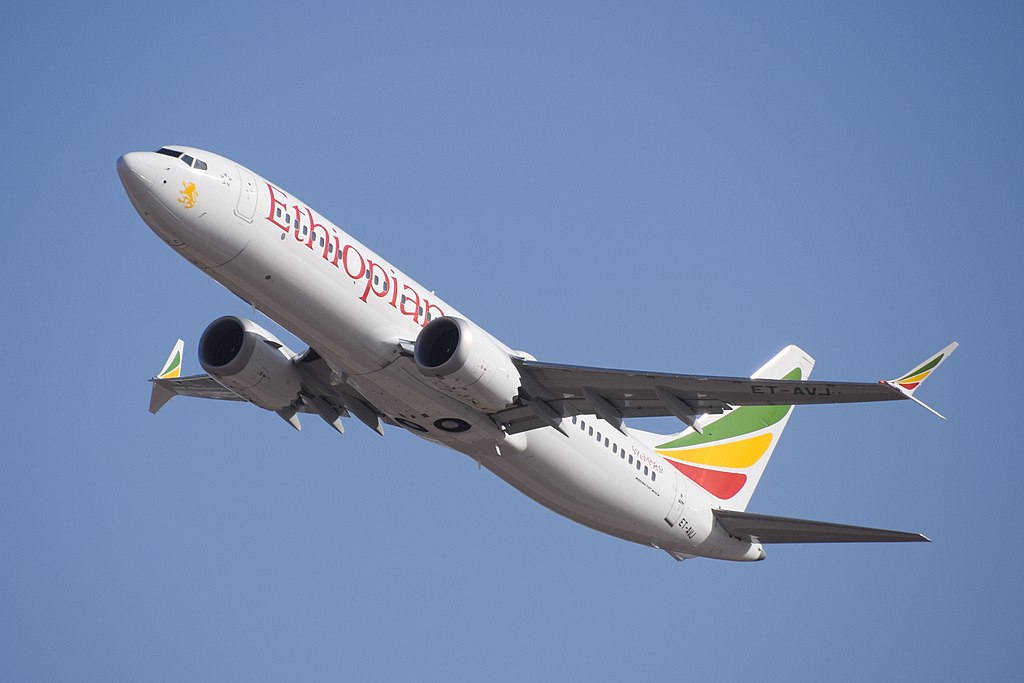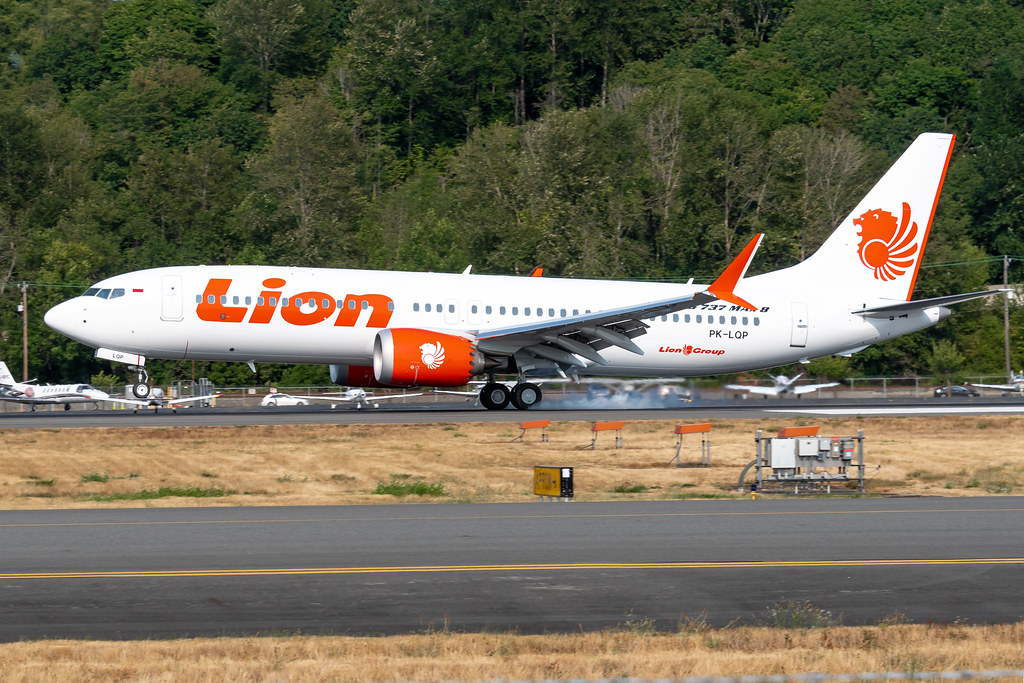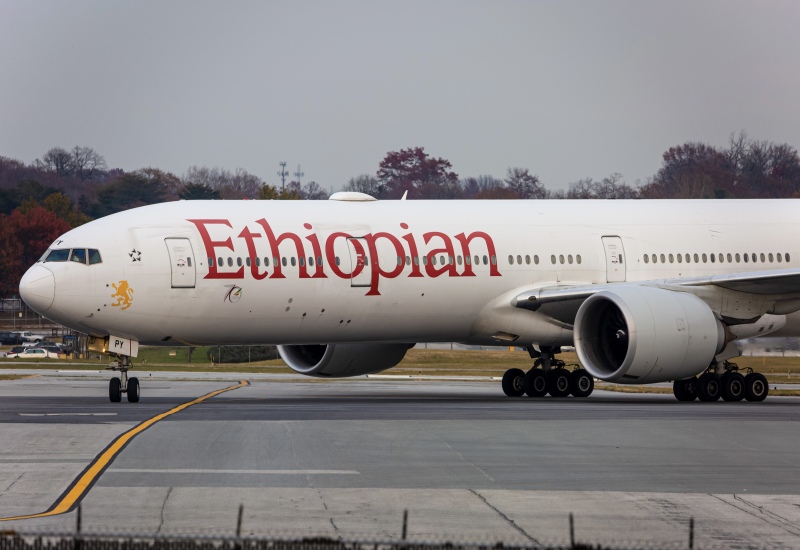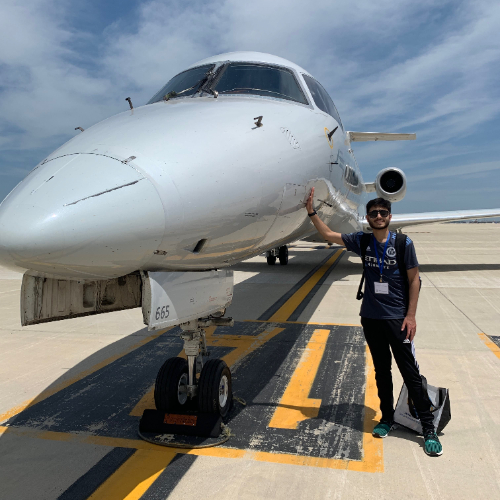Five years have elapsed since the tragic accident of Ethiopian Airlines Flight 302, a Boeing 737 MAX 8 flying from Addis Ababa to Nairobi. This was the second fatal incident within five months involving a 737 MAX. Shortly after Flight 302's demise, a two-year-long worldwide 737 MAX grounding went into effect. Such an extensive grounding highlighted various issues about the MAX and was dedicated to improving the aircraft's control systems before it returned to service.

The MCAS Debacle
On October 29, 2018, Lion Air Flight 610 took off from Jakarta's Soekarno-Hatta International Airport in Indonesia (CGK) for a domestic hop to Pangkal Pinang (PGK). Onboard were 181 passengers and eight crew. The aircraft operating was PK-LQP, a brand-new 737 MAX 8 delivered in July of that year. As Flight 610 was climbing out of Jakarta, the aircraft's angle-of-attack sensor malfunctioned.
Specifically, the sensor miscalibrated and sent incorrect data to the aircraft's Maneuvering Characteristics Augmentation System (MCAS). This "incorrect data" told the MCAS that the 737 MAX was angled too steeply, to which the MCAS responded by pushing the nose down. This was despite the aircraft itself being pitched up perfectly normally as it was climbing out. MCAS continuously pushing the nose down went against the pilot's best efforts to recover the plane. Flight 610 impacted the Java Sea 13 minutes after takeoff, with all 189 sadly perishing.

Just months later, on March 10, 2019, Ethiopian Airlines Flight 302 took off from Addis Ababa Bole International Airport (ADD) for a short international flight to Nairobi Jomo Kenyatta International Airport in Kenya (NBO). Onboard were 149 passengers and eight crew. One minute after liftoff, the first officer reported a "flight control" problem to the Addis Ababa tower. Soon after, a similar scenario unfolded to that of Lion Air 610.
The Ethiopian MAX's MCAS system activated and pitched the aircraft's nose down, sending the plane into a dive. This sudden MCAS error also occurred due to erroneous data from the angle-of-attack sensors. Flight 302 continued to plunge towards the ground, unable to be recovered from its dive. Ethiopian Airlines 302 went down 39 miles (63 kilometers) from Bole International Airport near Bishoftu, Ethiopia. All 157 occupants of the flight perished.
The similar circumstances under which both flights crashed sent a shockwave worldwide, prompting airlines to ground their MAX jets until Boeing could solve this issue.

Profits Over Passengers
The investigations of both ill-fated 737 MAX flights uncovered shocking details about how these aircraft were built. Many would quickly point fingers at the MCAS system as the sole contributor to these tragic accidents. However, both planes were missing other systems that relay information to the MCAS. The reason for these being missing is that Boeing charged airlines extra to add them.
The angle-of-attack indicator that was faulty across both doomed MAX jets. This indicator displays the readings of the two angle-of-attack sensors. Another system add-on, called a "disagree light," would activate if both angle-of-attack sensors are at odds with each other. This disagree light was missing from both Lion Air and Ethiopian jets. Both airlines opted not to install these systems because Boeing charged them extra.
These planes were cleared to enter service if they were missing such a system because aviation regulators did not require them to be installed for the plane to enter service. Boeing's "profits over passenger safety" move put the planemaker in hot water. According to Bjorn Fehrm, an aviation consultancy group Leeham analyst, such a critical system normally "cost nothing for the airlines to install." However, Boeing charged money to install them "because it could."

Boeing soon made the disagree light standard on all 737 MAX jets. Furthermore, the planemaker entered a comprehensive recertification process for the aircraft. The company made significant changes to the MAX's design and the MCAS. This prompted the MAX to eventually be cleared by worldwide regulators, including the FAA, CAA, and EASA.
The 737 MAX reentered service with American carriers in 2021, with other airlines worldwide following soon after. There have not been significant issues involving MCAS since. The 737 MAX has continued to make headlines over issues surrounding other parts of the aircraft. These include door plugs, as in the case of Alaska Airlines 1282, or faulty rudder pedals, as in the case of a recent United Airlines 737 MAX 8.
Boeing is once again involved in legal proceedings and internal efforts to address these problems affecting its newest airplanes. How the legendary manufacturer will learn from these mistakes and ensure the total safety of its MAX aircraft moving forward remains to be seen in loving memory of those lost onboard Lion Air Flight 610 and Ethiopian Airlines Flight 302.
Comments (2)
 Pete P.
This article merely regurgitated what has already been published, and not very accurately either. As it is, the news media published a lot of speculation about the MAX and Boeing and passed it off as fact. The author adds so much more fiction to the narrative that the article would have more credibility if it was signed: Pinocchio.
Little knowledge is a dangerous thing. And merely being an aviation enthusiast qualifies as little knowledge when writing an article purporting to explain tragic events that occurred in the recent past. Not only does it contribute to a flawed understanding of complex matters because the education required to understand aeronautical engineering is lacking, it makes you dependent on equally—if not more—incompetent news reporters for information, analysis and conclusions, with no ability to discern plausible nonsense from valid and true information. Get a proper education in the subject before you begin disparaging people and companies based on little to no factual knowledge or understanding.
Pete P.
This article merely regurgitated what has already been published, and not very accurately either. As it is, the news media published a lot of speculation about the MAX and Boeing and passed it off as fact. The author adds so much more fiction to the narrative that the article would have more credibility if it was signed: Pinocchio.
Little knowledge is a dangerous thing. And merely being an aviation enthusiast qualifies as little knowledge when writing an article purporting to explain tragic events that occurred in the recent past. Not only does it contribute to a flawed understanding of complex matters because the education required to understand aeronautical engineering is lacking, it makes you dependent on equally—if not more—incompetent news reporters for information, analysis and conclusions, with no ability to discern plausible nonsense from valid and true information. Get a proper education in the subject before you begin disparaging people and companies based on little to no factual knowledge or understanding.
 EDF55IEC www.yandex.ru
EDF55IEC www.yandex.ru
EDF55IEC www.yandex.ru
EDF55IEC www.yandex.ru
Add Your Comment
SHARE
TAGS
INFORMATIONAL Ethiopian Airlines Lion Air Boeing Boeing 737 MAX 737 MAX Indonesia Ethiopia MCAS Incident Safety History InvestigationRECENTLY PUBLISHED
 Learjet Owned By Vince Neil Crashes Into Gulfstream Jet, 1 Fatality Confirmed
On February 10th, around 14:30 local time, a Learjet private jet aircraft crashed into another private jet after landing at Scottsdale Airport (SCF) in Arizona.
NEWS
READ MORE »
Learjet Owned By Vince Neil Crashes Into Gulfstream Jet, 1 Fatality Confirmed
On February 10th, around 14:30 local time, a Learjet private jet aircraft crashed into another private jet after landing at Scottsdale Airport (SCF) in Arizona.
NEWS
READ MORE »
 Seattle Plane Strike 2025: Japan Airlines and Delta Collision Raises Safety Concerns
Seattle-Tacoma International Airport saw a concerning incident on Wednesday morning when a Japan Airlines (JAL) plane clipped a parked Delta Air Lines jet while taxiing. Thankfully, no one was injured, but passengers described the collision as a frightening experience.
NEWS
READ MORE »
Seattle Plane Strike 2025: Japan Airlines and Delta Collision Raises Safety Concerns
Seattle-Tacoma International Airport saw a concerning incident on Wednesday morning when a Japan Airlines (JAL) plane clipped a parked Delta Air Lines jet while taxiing. Thankfully, no one was injured, but passengers described the collision as a frightening experience.
NEWS
READ MORE »
 Ethiopian Airlines Expands Cargo Fleet with New Boeing 777 Freighter
Ethiopian Airlines has expanded its cargo fleet with a brand-new Boeing 777 Freighter, registered as ET-BAB (MSN 68140). The aircraft was delivered directly from Boeing’s factory in Everett, Washington, USA, and landed at Addis Ababa Bole International Airport at 3:41 PM (GMT+3) on Wednesday, January 22, 2025.
NEWS
READ MORE »
Ethiopian Airlines Expands Cargo Fleet with New Boeing 777 Freighter
Ethiopian Airlines has expanded its cargo fleet with a brand-new Boeing 777 Freighter, registered as ET-BAB (MSN 68140). The aircraft was delivered directly from Boeing’s factory in Everett, Washington, USA, and landed at Addis Ababa Bole International Airport at 3:41 PM (GMT+3) on Wednesday, January 22, 2025.
NEWS
READ MORE »





